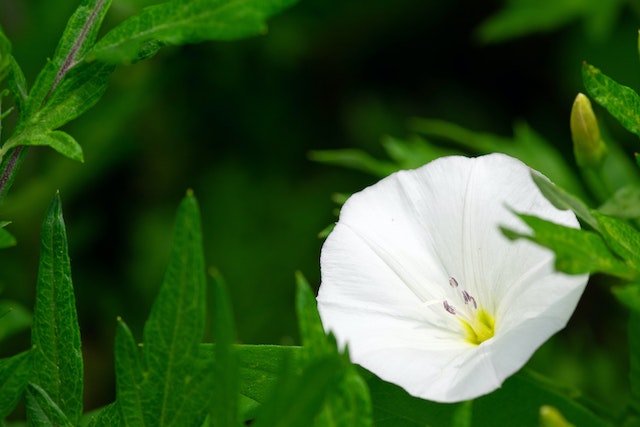
Why do some plants bloom at night? To avoid predators and because they are pollinated by insects that are nocturnal.
All plants that have flowers use them to attract pollinators so that they can spread their DNA as far as possible. There are some plants that self-pollinate, but the risk there is that they have very little genetic variation and if a genetic disease appears, it can spread. This can be seen in groups of animals that are cut off and can only reproduce amongst themselves. The last woolly mammoths are a good example. So, in order to avoid this, plants need pollinators to spread their pollen far and wide. Most of the pollinators that plants use fly during the day. However, there are thousands of species of insects that are awake at night and that can be very effective pollinators. To make use of this, and to cut down on the competition, there are a group of plants that have evolved to bloom at night, when all the other plants are closed up.
Night-flowering plants are an interesting demonstration of evolution. Butterflies and moths evolved from a common ancestor. Over time, moths started to come out later than butterflies to avoid their common predators. This enabled them to survive, and the trait was passed on. Moths slowly became nocturnal. They also became darker so that they would be less visible to their predators. An evolutionary change in one species quite often causes changes in other species and some flowering plants started to evolve alongside the moths. They became the night-flowering plants that we are learning about today.
There are over different species of plant that bloom at night. During the day, flowers are pollinated by bees, flies, butterflies, and a host of other insects and animals. At night, they are mainly pollinated by moths and bats. These plants have several methods to attract pollinators. The first thing is the color of their flowers. Daylight flowers are colored in order to attract specific insects because different insects see different wavelengths more strongly. Bees are attracted to blue, purple, and yellow flowers. Flies are attracted to brown flowers. Butterflies are attracted to many colors, so long as they are bright. Flowers that bloom at night have to be white to stand out from the dark background. Night flowers also need to have a stronger scent because night insects rely on vision far less than smell. Night-blooming flowers also have a lot of nectar to attract the moths. This nectar attracts bats and flying foxes as well. Some flowers that bloom at night have also evolved to time their flowering rhythms with moon cycles. There is more light during a full moon and that means more moths.
Most plants don’t flower at night, but they are active all day long. The only difference between plants that flower in the day and those that flower at night is when they flower and their color. They still photosynthesize at the same time and in the same way. Night-flowering plants are still green because of the chlorophyll, which they need to photosynthesize. During the day, plants take in carbon dioxide, which they use to make sugars, and they release oxygen as a byproduct. At night, they release carbon dioxide and take in oxygen, which is the basic process of respiration. All plants do this, both ones that open in the day and in the night.
There are some plants which have evolved the ability to do part of their photosynthesis at night. They are called CAM plants and CAM stands for Crassulacean Acid Metabolism. Plants that can do this are usually found in deserts, or very dry areas and they do it so that they don’t lose too much water. This is the main process by which cactuses photosynthesize. In most plants, they open their stomata during the day to take in carbon dioxide, which they mix with water in the presence of sunlight. It is a one step process. CAM plants can’t open their stomata during the daylight hours because it is too hot. They open their stomata at night to take in carbon dioxide without losing water to evaporation. Then they use the stored carbon dioxide to create energy during the daylight hours. And this is what I learned today.
Photo by Raymond Eichelberger: https://www.pexels.com/photo/close-up-on-white-moonflower-12367172/
Sources
https://www.fs.usda.gov/wildflowers/pollinators/animals/moths.shtml
https://byjus.com/question-answer/state-3-disadvantages-of-self-pollination/
https://www.theweathernetwork.com/en/news/nature/habitats/why-these-flowers-only-bloom-at-night
https://www.abc.net.au/gardening/how-to/bump-in-the-night/9777676
https://askabiologist.asu.edu/questions/what-are-moon-flowers-and-why-do-they-bloom-only-night
https://wisconsinpollinators.com/Articles/PollinatorColorPreference.aspx
https://a-z-animals.com/blog/are-moths-nocturnal-or-diurnal-their-sleep-behavior-explained/
https://en.wikipedia.org/wiki/Crassulacean_acid_metabolism
https://www.fnp.com/article/do-you-know-which-plants-release-oxygen-at-night
